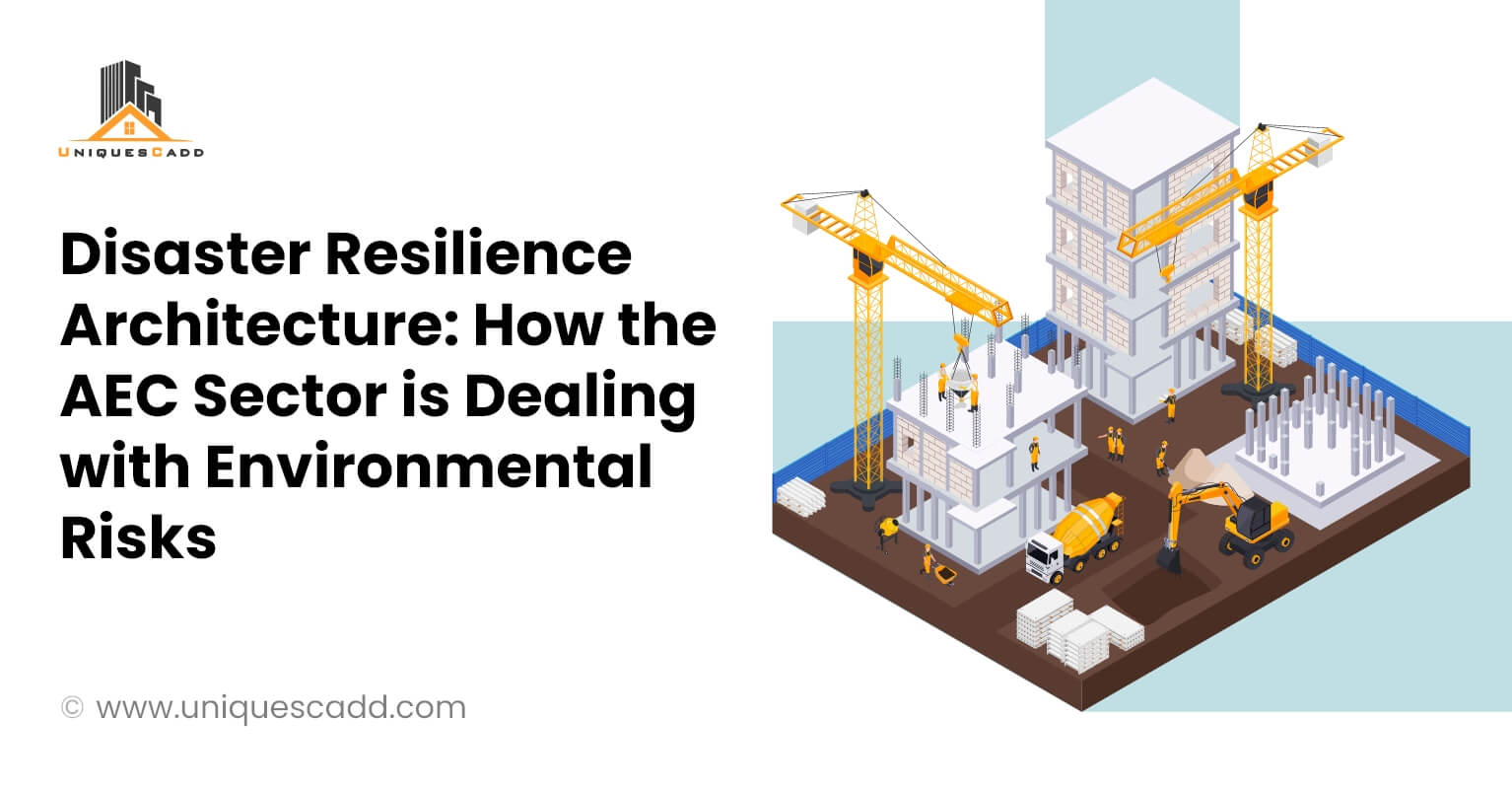Disaster Resilience Architecture: How the AEC Sector is Dealing with Environmental Risks
BIM Services

"We cannot stop natural disasters, but we can prepare ourselves to fight them."
The incidence of climate-related disasters has tripled in the previous 30 years and is still increasing at an alarming rate. And the impact of calamities in today's world puts far more at risk. The enormous population increase and industrial boom have resulted in the building of infrastructure that, if struck by a disaster, would magnify the collateral damage by a factor of ten. These reasons push disaster-resilient architecture to the forefront of future building designs.
According to WHO, natural disasters include earthquakes, tsunamis, volcanic eruptions, landslides, hurricanes, floods, wildfires, heatwaves, and droughts. And each has a unique but equally disastrous impact on lives and infrastructure. Disaster-resilient architecture strives to construct buildings and structures that can withstand natural and artificial disasters and recover quickly. The resilient design anticipates future issues through better site planning and more robust building processes.
What Resilient Architecture Design Measures are there for the AEC industry?
UNESCO has proposed a holistic approach to building disaster-resistant structures appropriate for the local environment and architecture. It considers social, cultural, economic, environmental, and technical factors. Disaster-resilient architecture is built to survive the most prevalent disasters in a given area. Such architecture mitigates the negative consequences of natural disasters and allows for faster risk management.
Disaster-resistant construction materials can be employed in both new and existing structures. Flood-resistant building materials include concrete, glazed bricks, closed cells, foam insulation steel hardware, and marine-grade plywood glues.
Architectural stand structures in seismic areas can be protected with paper tubes, biomaterials, and shape memory alloys. They provide flexibility to buildings and structures and keep them sturdy during earthquakes. It is impossible to create architecture that is resistant to natural disasters. However, in this new environment, projects are strategically intended to mitigate the effects of natural disasters. Building information modeling is one invention that could be crucial in developing a world that is resilient to natural disasters. It helps prepare structures for disasters and tragedies and limits the damage a crisis can inflict. BIM services can help retrofit existing structures to make them more disaster-resistant. Building information modeling can improve the building environment's resilience. Construction project management, environmental stability, and other industries will rely heavily on BIM methods and technologies. It gives all parties involved real-time, detailed information such as floor plans and the structural state of the structure.
BIM and AI Together to Develop Resilient Building Models
BIM modeling services can improve the built environment's resilience. Construction project management, environmental stability, and other industries will rely heavily on BIM methods and technologies. It gives all parties involved real-time, detailed information such as floor plans and the structural state of the structure. Simulation tools can help designers predict how the building will react in a natural disaster when used in collaboration with BIM models. Thanks to current technology, BIM 3D modeling architects and engineers can simulate the spread of a fire, calculate earthquake damage, and foresee how flooding may affect a project.
BIM for Better Preparedness: Usually, the rescue team has to use physical reference materials like blueprints or two-dimensional CAD designs to gain access to a facility. These representations could be more helpful in an emergency since the information they provide is typically out-of-date and doesn't provide the level of detail that emergency personnel need. For such teams who need precise, thorough, and current information on the structure and contents of a building, BIM architectural services turn out to be a great support. Since it records a building's three-dimensional internal geometry and evacuation details, it can incredibly help the rescue team. As known, BIM models can be highly detailed; they may also incorporate a range of building data relevant to disaster response teams, such as information.
BIM for Disaster Management and Response: BIM software can be a valuable resource for building owners looking to develop more effective disaster response plans or even automated building systems. BIM technologies can help owners plan rescue and evacuation routes for fires and other crises more successfully. They can also assist building owners and disaster response teams manage an active evacuation more successfully. A system can even track evacuees as they walk through the building using a combination of building information modeling data and intelligent building technology, potentially guiding them to nearby exits or assisting in coordinating their movement based on the location of rescue teams.
Using BIM to Remodel Informal Housing: Unfortunately, around the world, more than a billion people reside in squalid, substandard dwellings. Plumbing, electricity, and water may need more supply in informal houses. Residents of everyday homes are particularly susceptible to natural disasters due to poor construction and material choices. By redesigning the existing informal housing, developers can use BIM services to partially automate the process of building disaster-resilient structures. These upgrades support the structural stability of the existing substandard housing. By renovating pre-existing buildings rather than building brand-new ones, governments can cut the expense of providing adequate, disaster-resistant housing for their citizens while minimizing the danger of transferring existing residents.











65a113d98a45c.jpg)
